“Abdominoplasty” is the medical name for a “tummy tuck” operation. They’re the same thing and have been around for many years. It involves removing a horizontal wedge of skin and fat from the lower abdominal wall between the belly button and the pubic area. The belly button is left in position, as it is attached to the abdominal wall muscles. The upper abdominal skin is lifted up from its attachments to the underlying muscles. Often there is a divarication of the rectus muscles (refer below), and it is strongly repaired. Next, the upper abdominal skin is stretched down to the pubic area, thinning and tightening the entire front of the abdominal wall. The skin is then all carefully closed, resulting in a long low horizontal scar line at about the level of the top of the pubic hair. The belly button is then brought back out through a new hole in the skin that has been stretched down from the upper abdomen.
Abdominoplasty is the best way to remove excess skin from the abdomen and also repair a divarication. It results in a low scar across the front at the level of a caesarian section scar, from hip to hip. If there is excess skin at the sides or back though, a circumferential procedure might be required to achieve the best result.
Extended Abdominoplasty
An abdominoplasty does not address skin or excess fat around the sides, flanks or back. Excess lower body tissue (skin and fat) may be present at the sides and back in some women after pregnancies, back occurs in most people who have undergone Massive Weight Loss (MWL).
There are several options to address the extra tissue over the flanks and back and provide the best improvement of body contour possible. All are similar in that they involve extending the incision from a standard abdominoplasty further around the sides and across the lower back. If the incision is circumferential, this is called a belt lipectomy, circumferential abdominoplasty or body lift. If the incision isn’t quite circumferential, it is usually called an extended abdominoplasty. All these body contouring procedures leave a long low scar extending from across the pubic area and over the hips and continuing some distance across the junction of the buttock and the lower back.
Generally an extended abdominoplasty is performed where the patient has excess skin at the front, sides and back, but has not lost more than around 30kg. If patients have lost more weight, or have a flattening or loss of contour of the buttocks, a body lift tends to give better results.
Body Lift
A Body lift is a circumferential abdominoplasty and is often the procedure of choice for a Massive Weight Loss patient.
It has the same scar but is a bigger operation than a circumferential abdominoplasty, and generally uses more liposuction and fat redistribution with a particular emphasis on maximising body contour.
A Body lift procedure optimises scar position, smoothness of contour and provides for the maximum amount of safe skin removal.
Thigh Reduction & Brachioplasty
For many patients, excess skin on the arms and legs can cause embarrassment and can make clothing choices difficult. There can also be functional issues, such as chafing between the legs, making exercise painful.
The trade-off for thigh or arm reduction, as in all body contouring operations, is a scar. For arm reductions, the scar runs from the armpit to the elbow; for thigh reductions, it runs from the inside groin to the knee. Generally these scars will follow much the same course as seams in clothing. Though these scars are considerable, most patients will happily trade a scar for an improved contour. Over time, the scars often become barely visible.
Generally, these procedures are done in combination with liposuction, to further empty the excess skin of any fat. This allows the removal of large amounts of skin whilst preserving all of the important structures in your arms or legs such as nerves, blood vessels, and lymphatics. This promotes more rapid healing, and better preservation of sensation.
Abdominal Wall & Trunk Liposuction
Abdominal liposuction can be used where there is excess fat but no excess skin, and no divarication.
Liposuction has many variations but they are all basically the same technique: filling the fatty tissues with a local anaesthetic solution and a vasoconstrictor to minimise blood loss, then carefully aspirating or removing fat from under the skin using a thin hollow tube. Good results are obtained when the skin is elastic, and the area to be treated has not responded to weight loss and exercise.
Divarication of the Rectus Abdominis Muscles
A divarication is the separation of the vertical rectus abdominis (six pack) muscles which results in a weak area creating a bulge at the front of the abdomen, or even a hernia.
In pregnancies, it is normal for a separation to develop between the rectus muscles. After pregnancy, the split is supposed to join back together, but unfortunately it commonly doesn’t. This can result in a thickening of the waist with loss of body shape, a bulge like a pot belly even if you are thin, discomfort, loss of core strength, back pain and even a hernia.
Annoyingly, exercise can’t repair a divarication. It is readily repaired as part of all abdominoplasty, circumferential abdominoplasty and body lift procedures when necessary.




